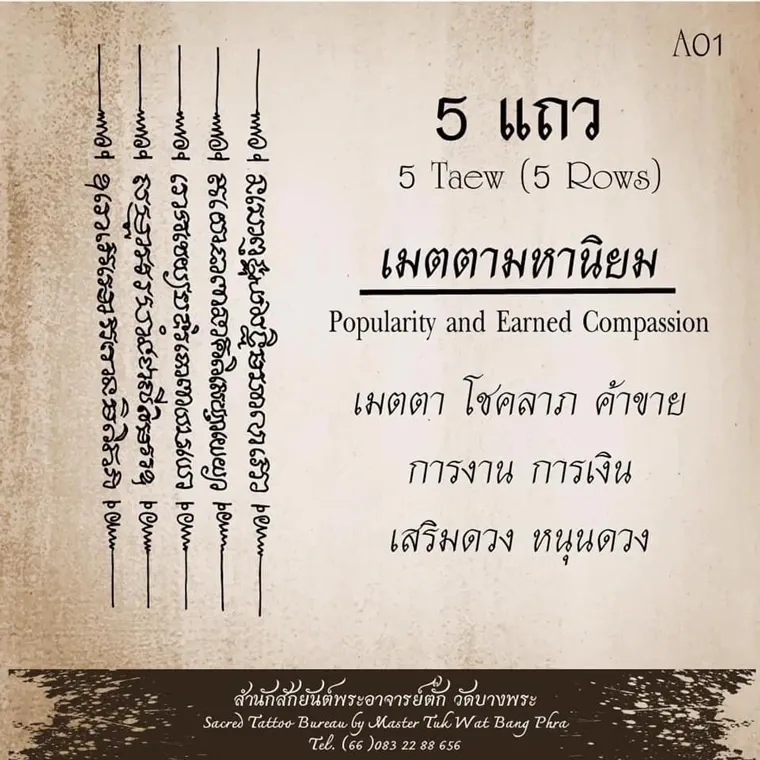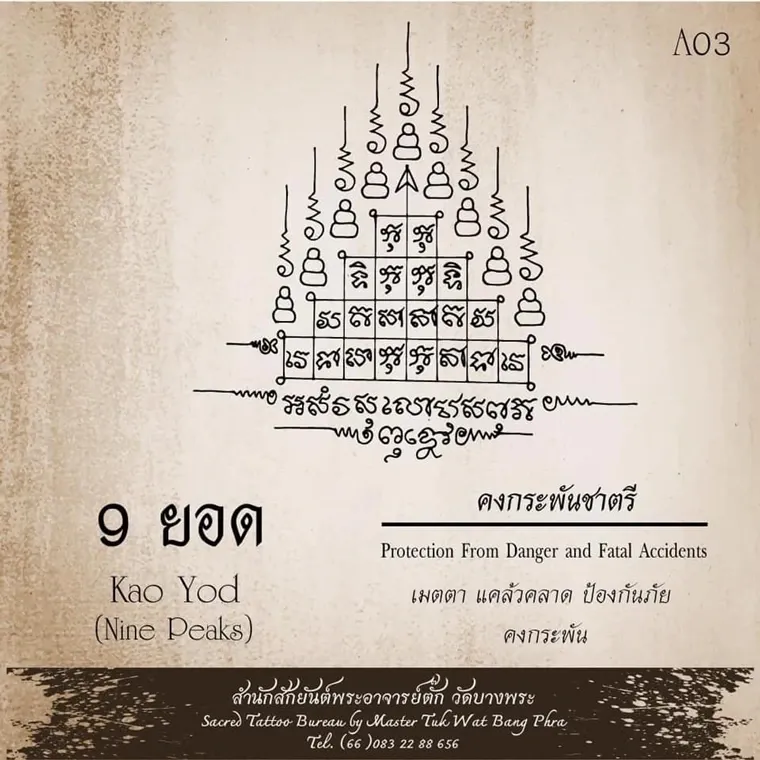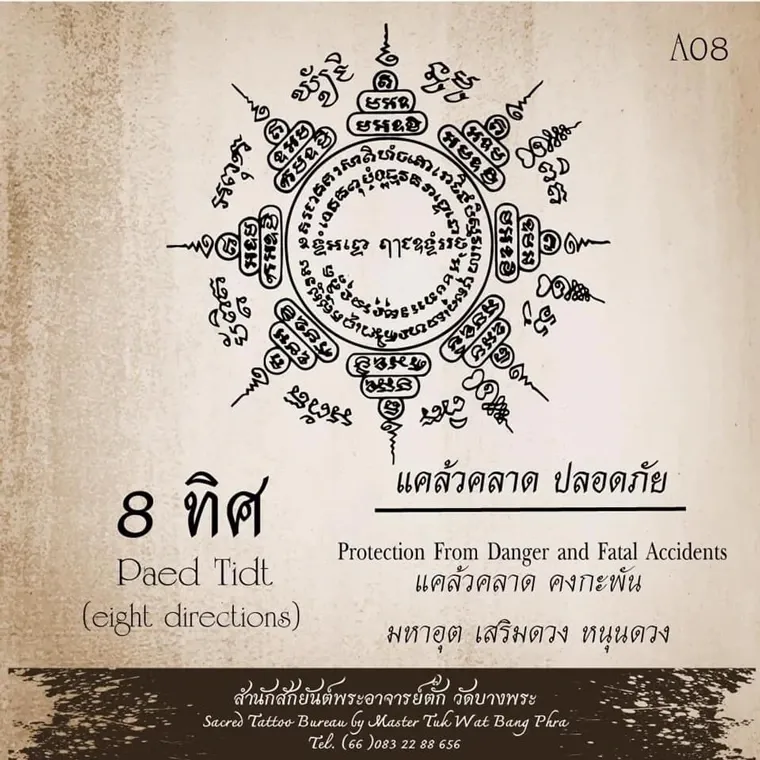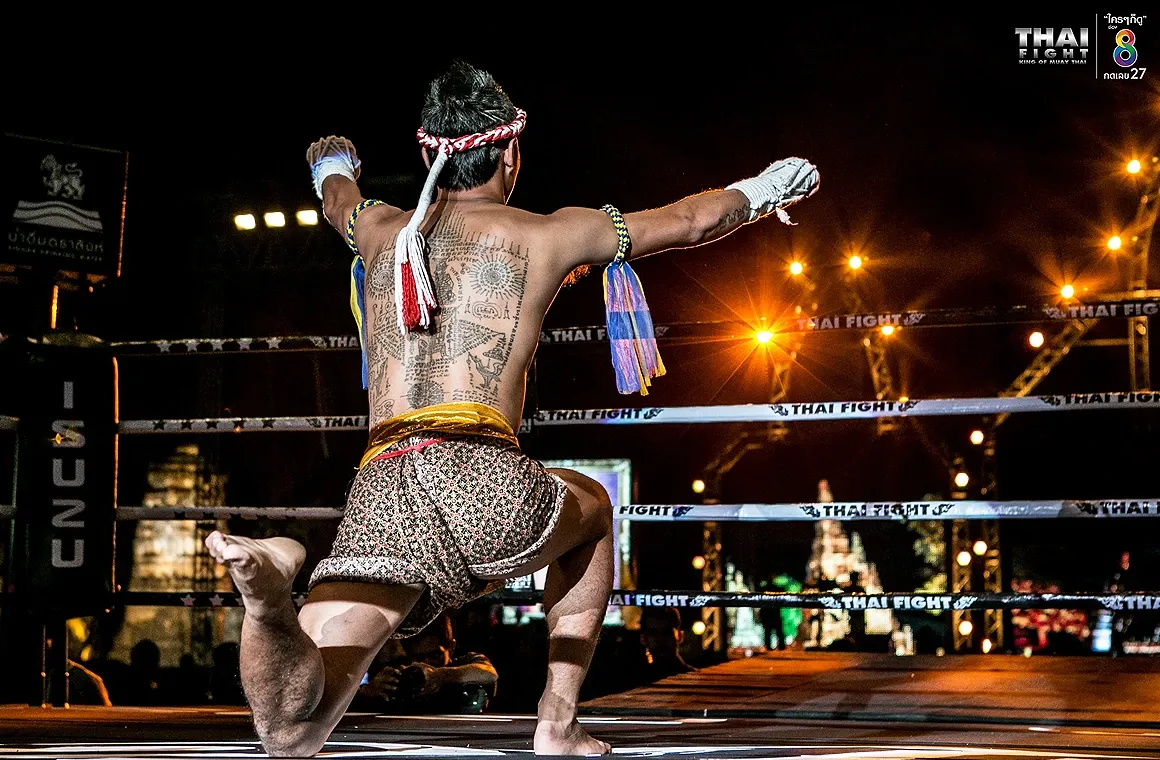0 / 32
0 / 32
The Spiritual Side of Muay Thai: Meditation and Sacred Rituals
November 26, 2024

The Spiritual Dimension of Muay Thai
Muay Thai, often celebrated as the "Art of Eight Limbs," is more than a test of physical strength and skill--it's a deeply spiritual practice rooted in Thailand’s rich cultural and religious traditions. For centuries, Muay Thai has combined the physical rigor of martial arts with meditative practices and sacred rituals, fostering resilience, focus, and a connection to something greater than oneself.
From the intricate designs of sak yant tattoos, believed to hold protective powers, to the solemn wai kru rituals that pay homage to teachers and ancestors, Muay Thai embodies a profound union of body, mind, and spirit. Meditation, a core component of many practitioners’ routines, sharpens mental clarity and prepares fighters for the challenges they face, both in and out of the ring.
This spiritual depth sets Muay Thai apart, offering enthusiasts not only a path to physical mastery but also an opportunity to connect with a cultural heritage steeped in mindfulness, respect, and resilience. Whether through the sacred ink of sak yant or the graceful movements of the wai kru ceremony, Muay Thai is a journey of self-discovery that goes far beyond fighting techniques.
In this article, we’ll delve into the spiritual side of Muay Thai, exploring how meditation, sak yant tattoos, and traditional rituals make this martial art a transformative experience for body, mind, and soul.
The Role of Sak Yant in Muay Thai Culture
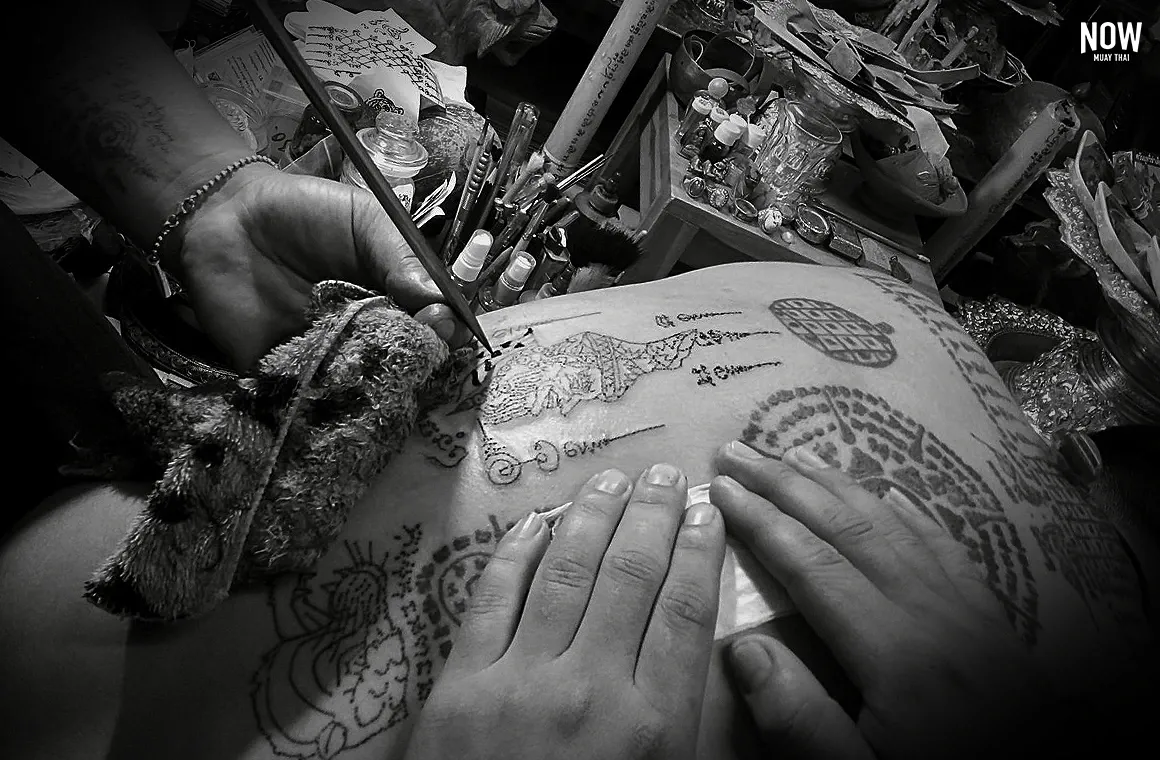 Sak Yant tattoos, deeply rooted in Thai beliefs and culture, symbolize spiritual protection, courage, and strength. Etched with sacred symbols and blessed by masters, they connect wearers to ancient traditions and mindfulness in Thai heritage.
Sak Yant tattoos, deeply rooted in Thai beliefs and culture, symbolize spiritual protection, courage, and strength. Etched with sacred symbols and blessed by masters, they connect wearers to ancient traditions and mindfulness in Thai heritage.
What is Sak Yant?
Sak Yant, or “sacred tattoos,” are intricate designs believed to bestow protection, strength, and invincibility upon their bearers. Rooted in ancient Buddhist and animist traditions, these tattoos merge spiritual symbolism with sacred geometry. Each design holds a unique meaning, chosen to align with the recipient’s goals or life path.
The ritual of receiving a sak yant is deeply spiritual. Before the tattooing begins, the wai kru ceremony is performed to honor the master tattoo artist, known as an ajarn, and seek blessings. The tattoos are traditionally applied with bamboo or a metal rod, requiring great skill and precision. This process not only leaves a lasting physical mark but also serves as a powerful spiritual experience.
Significance in Muay Thai
For Muay Thai fighters, sak yant tattoos are much more than body art--they symbolize courage, discipline, and spiritual protection. Many fighters choose designs that resonate with their personal and professional aspirations:
- Hah Taew (Five Lines): Each line represents a specific blessing, including success, protection, good fortune, charm, and luck. The combination creates a powerful symbol of positivity and resilience.
- Gao Yord (Nine Peaks): This popular design represents Mount Meru, a sacred cosmic mountain in Buddhist and Hindu cosmology. It offers protection, success, and good fortune, making it a favorite among fighters.
- Paed Tidt (Eight Directions): Featuring eight Buddha figures facing different directions, this design signifies protection from negative energy and dangers, guiding the wearer toward enlightenment.
- Suea Ku (Twin Tigers): A symbol of strength, courage, and dominance, this design is highly favored by fighters. It represents an unyielding spirit and fearlessness in battle.
- Sroi Sangwan Phrajao (Diamond Necklace): A symbol of invincibility and protection, this sacred design shields its wearer from harm. Favored by warriors, it embodies strength, resilience, and universal safety in battle and beyond.
Sak yant tattoos serve as spiritual armor for Muay Thai practitioners, instilling confidence and connecting them to the rich cultural and spiritual heritage of Thailand.
Modern vs. Traditional Sak Yant
While sak yant tattoos have gained international popularity, their significance has evolved over time. For some, they are now viewed as a fashion statement, admired for their intricate designs rather than their spiritual meaning.
However, traditionalists and Muay Thai fighters still hold sak yant in high regard. The tattoos are seen as incomplete without the accompanying rituals and blessings that activate their spiritual power. This reverence ensures that sak yant remains a cornerstone of Muay Thai culture, symbolizing the fusion of physical strength and spiritual resilience.
Beyond Protection: Personal Growth Through Sak Yant
The symbolic power of sak yant extends beyond physical protection. Fighters often seek tattoos to foster:
- Bravery and Determination: Designs like Twin Tigers or Hah Taew can bolster mental resilience.
- Luck and Prosperity: Patterns like Gao Yord bring blessings in various aspects of life.
- Focus and Strategy: Spiritual elements in designs promote mental clarity and advanced strategic thinking.
Sak yant tattoos represent not just spiritual strength but also the commitment to self-improvement - a value deeply embedded in Muay Thai. By adorning these sacred symbols, fighters and wearers embrace their journey toward personal transformation, resilience, and cultural connection.
Wai Kru Ritual: Muay Thai’s Meditation in Motion
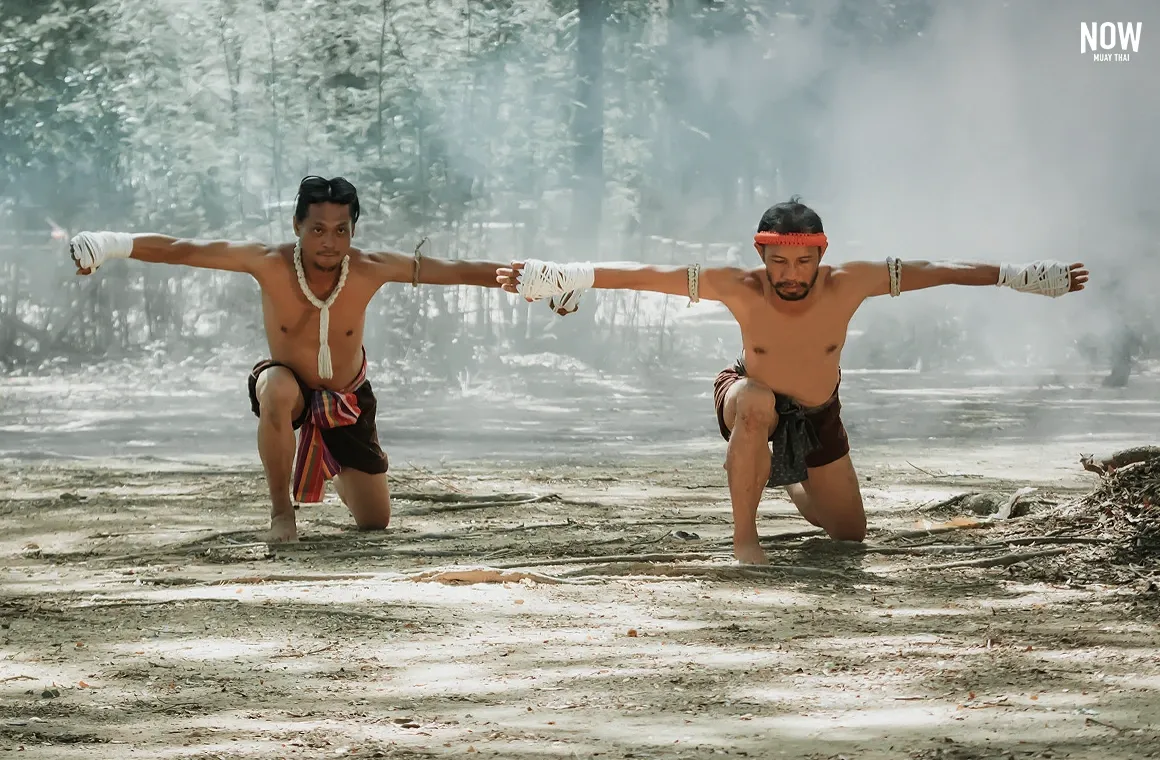 The Wai Kru Muay Thai is a profound ritual symbolizing respect, gratitude, and spiritual grounding. More than a pre-fight tradition, it connects fighters to their trainers, ancestors, and the cultural heritage of Muay Thai.
The Wai Kru Muay Thai is a profound ritual symbolizing respect, gratitude, and spiritual grounding. More than a pre-fight tradition, it connects fighters to their trainers, ancestors, and the cultural heritage of Muay Thai.
The Wai Kru is more than just a pre-fight tradition--it’s a meditative dance that embodies respect, focus, and spiritual grounding. Performed by Muay Thai fighters before every bout, the Wai Kru pays homage to trainers, ancestors, and the rich traditions of Muay Thai.
At its core, the Wai Kru is a moving meditation. Through deliberate, graceful movements, fighters calm their minds and focus their energy, preparing mentally and spiritually for the challenges ahead. The ritual often begins with slow, rhythmic steps that mirror the fighter’s internal process of centering themselves. Each motion carries profound symbolism, reflecting gratitude, respect, and a connection to the art’s ancient roots.
Beyond its personal impact on fighters, the Wai Kru holds immense cultural importance. It reinforces the values of humility and discipline that lie at the heart of Muay Thai. For spectators, it offers a glimpse into the spiritual dimension of this martial art - a tradition that blends physical strength with mindfulness and reverence.
In the ring, the Wai Kru is not just a performance but a powerful ritual that unites fighters with their heritage, offering them a moment of peace and clarity before the intensity of combat begins. It’s a testament to how Muay Thai transcends sport, becoming a practice of the body, mind, and spirit.
Meditation and Mental Strength in Muay Thai
Muay Thai isn’t just about physical prowess; it’s a mental game that requires sharp focus, unwavering confidence, and inner calm. For fighters, meditation becomes a powerful tool to sharpen these qualities, linking mental clarity with fighting strategy and execution.
The Link Between Meditation and Fighting
 A woman practicing shadow boxing in Muay Thai, embodying the spiritual essence of the sport through focus, discipline, and mindfulness, connecting physical movements with mental clarity and cultural tradition.
A woman practicing shadow boxing in Muay Thai, embodying the spiritual essence of the sport through focus, discipline, and mindfulness, connecting physical movements with mental clarity and cultural tradition.
In the heat of a match, split-second decisions can mean the difference between victory and defeat. Mental clarity, achieved through meditation, allows fighters to remain calm under pressure, anticipate their opponent’s moves, and execute precise techniques. Fighters often incorporate mindfulness techniques into their training, such as focused breathing, visualization, and moments of stillness before stepping into the ring. These practices enhance focus and the ability to stay present during intense exchanges.
Shadow boxing is another powerful meditative practice in Muay Thai. By visualizing an opponent, fighters simulate real scenarios, imagining counters and strikes while refining their combinations. This immersive focus sharpens their mental and physical readiness, bridging strategy with execution. Practicing combo drills with intent further cultivates concentration, ensuring each move is deliberate and precise.
Meditation also helps fighters manage pre-fight nerves and channel their adrenaline constructively. By calming the mind, they create a space for confidence and strategic thinking, enabling them to perform at their peak. Together, these techniques form a core part of Muay Thai training, blending mental strength with physical preparation.
Protective Amulets and Rituals in Muay Thai: Symbols of Strength
Muay Thai is more than a martial art; it’s a fusion of physical skill and spiritual tradition. Fighters draw strength from protective amulets, sacred chants, and rituals that connect body, mind, and spirit, providing resilience and focus both in and out of the ring.
Key Protective Amulets
1. Mongkol
This sacred headpiece, worn during pre-fight rituals, symbolizes respect and protection. Placed on the fighter’s head by their trainer, it is accompanied by blessings to invoke safety and success.
2. Prajead
These arm bands, crafted from cloth inscribed with sacred yantras, represent courage and invincibility. Fighters wear them as symbols of protection and empowerment.
3. Sak Yant (Sacred Tattoos)
Sak Yant tattoos are spiritual markings blessed by masters, believed to provide courage and protection. Designs like Gao Yord (Nine Peaks) for spiritual ascent or Hah Taew (Five Lines) for success and protection are popular among Muay Thai fighters.
Sacred Chants and Katha
Fighters recite katha, sacred chants, to focus their minds and invoke strength. These incantations serve as a form of meditation, helping fighters stay calm and disciplined, even under intense pressure.
The Cultural Significance
Protective amulets and rituals reflect Muay Thai’s holistic nature, uniting physical training with spiritual resilience. These traditions are more than symbolic; they guide fighters to embrace respect, discipline, and mindfulness, elevating Muay Thai into a way of life.
The Sacred Connection: Body, Mind, and Spirit
Muay Thai’s spiritual depth lies in its ability to blend strength with mindfulness. Sacred tattoos, rituals like wai kru, and meditation unite fighters’ physical and mental worlds, fostering resilience and inner peace.
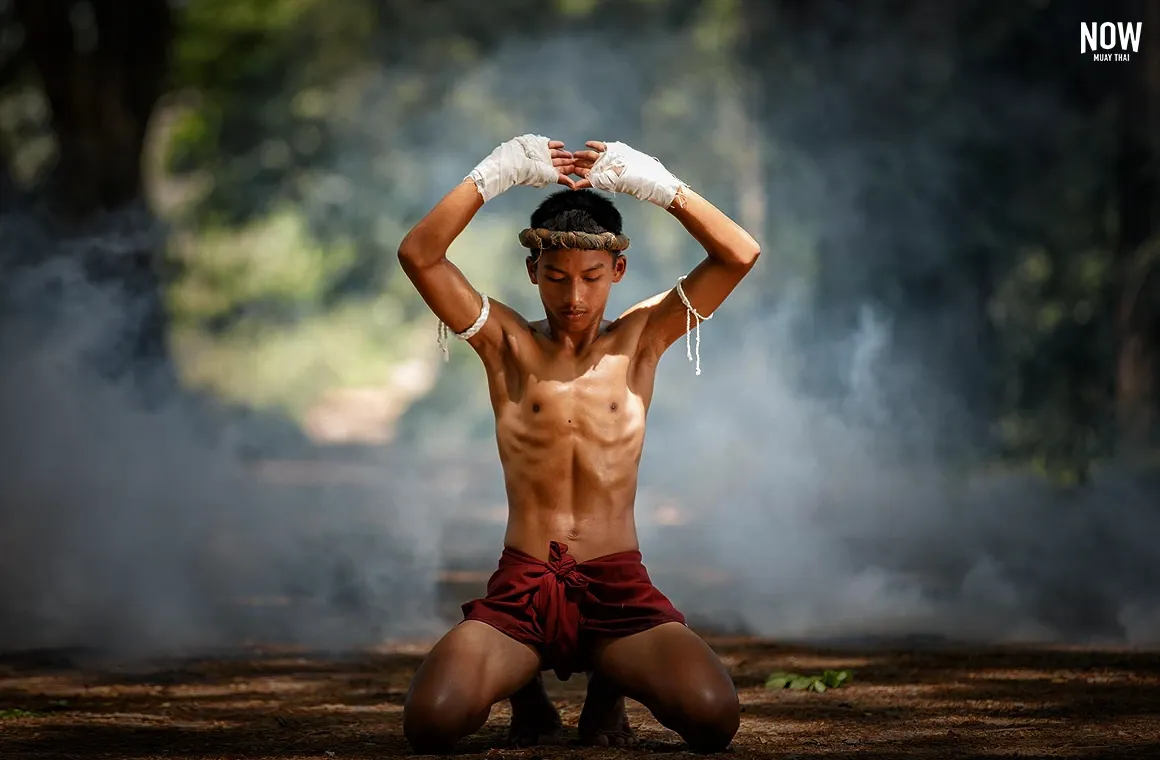 A young man performing Wai Kru, symbolizing Muay Thai’s spiritual depth where strength meets mindfulness.
A young man performing Wai Kru, symbolizing Muay Thai’s spiritual depth where strength meets mindfulness.
Strength Through Sak Yant
Sak Yant tattoos, such as Hah Taew or Twin Tigers, inspire courage and focus. Fighters often share stories of renewed strength and clarity linked to these sacred designs. One fighter credited his Hah Taew tattoo for helping him persevere after a series of defeats, calling it his spiritual armor.
Meditation: Bridging Mind and Spirit
Meditation sharpens mental clarity, enabling fighters to remain calm and strategic. Techniques like visualization and shadowboxing with imagined opponents enhance focus, turning physical skill into strategic brilliance.
Stories of Transformation
A Muay Thai fighter shared how sak yant tattoos, wai kru rituals, and meditation revitalized his career. Facing setbacks, he embraced these traditions for guidance, emerging stronger. “Muay Thai is my discipline, but these traditions are my anchor. They remind me why I fight and who I fight for,” he reflected.
By connecting body, mind, and spirit, Muay Thai becomes more than a sport—it’s a path to self-discovery and inner strength.
Begin Your Sacred Journey
Muay Thai is more than a workout or sport; it’s a path to personal transformation, deeply intertwined with sacred traditions. Whether you’re seeking physical strength, spiritual growth, or both, Muay Thai offers a unique journey that unites body, mind, and spirit.
Start your journey today with Nowmuaythai.com to explore authentic Muay Thai training and immerse yourself in its sacred traditions. Discover the art, the discipline, and the spiritual connection that make Muay Thai a way of life.
Learn more about Muay Thai
Back

